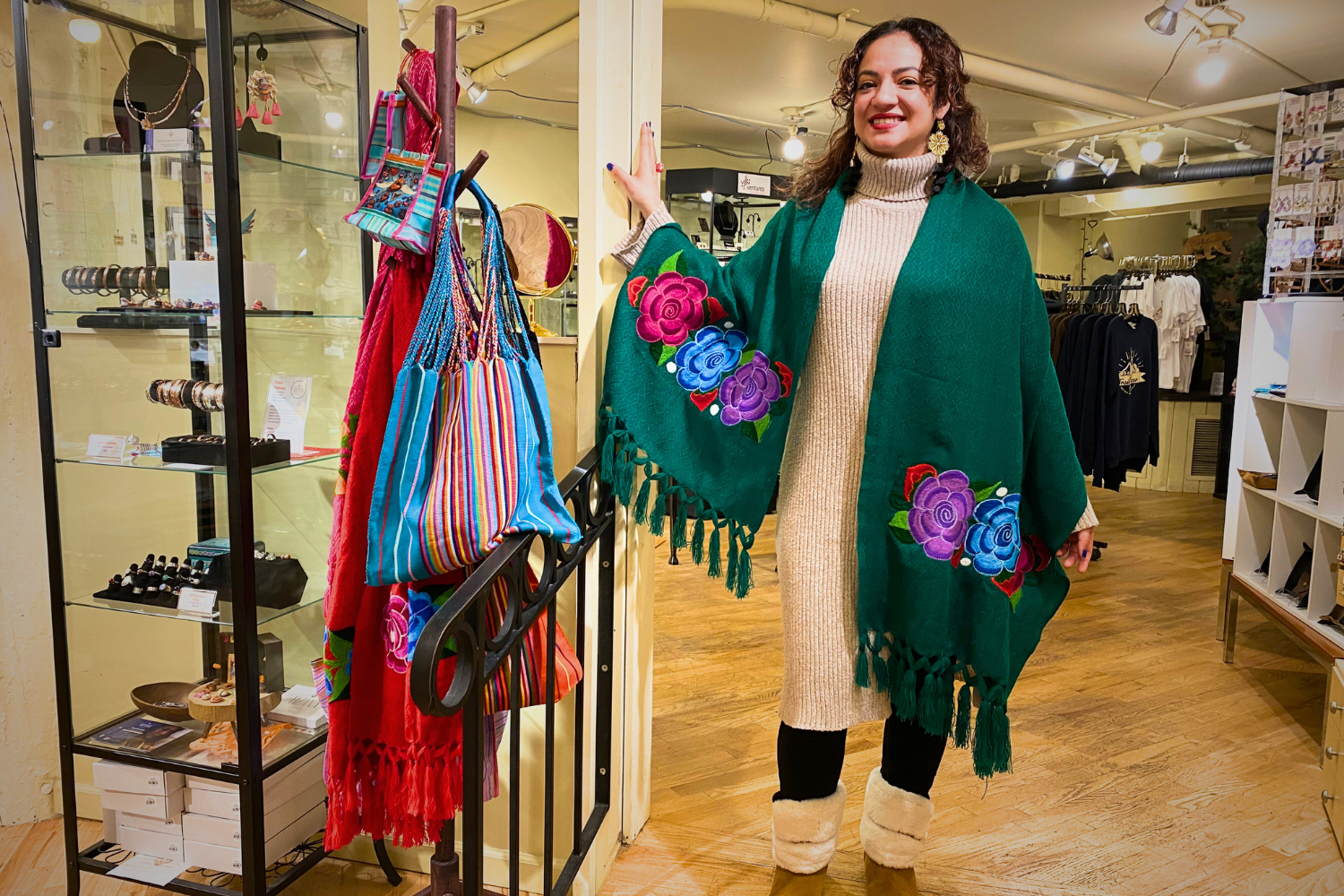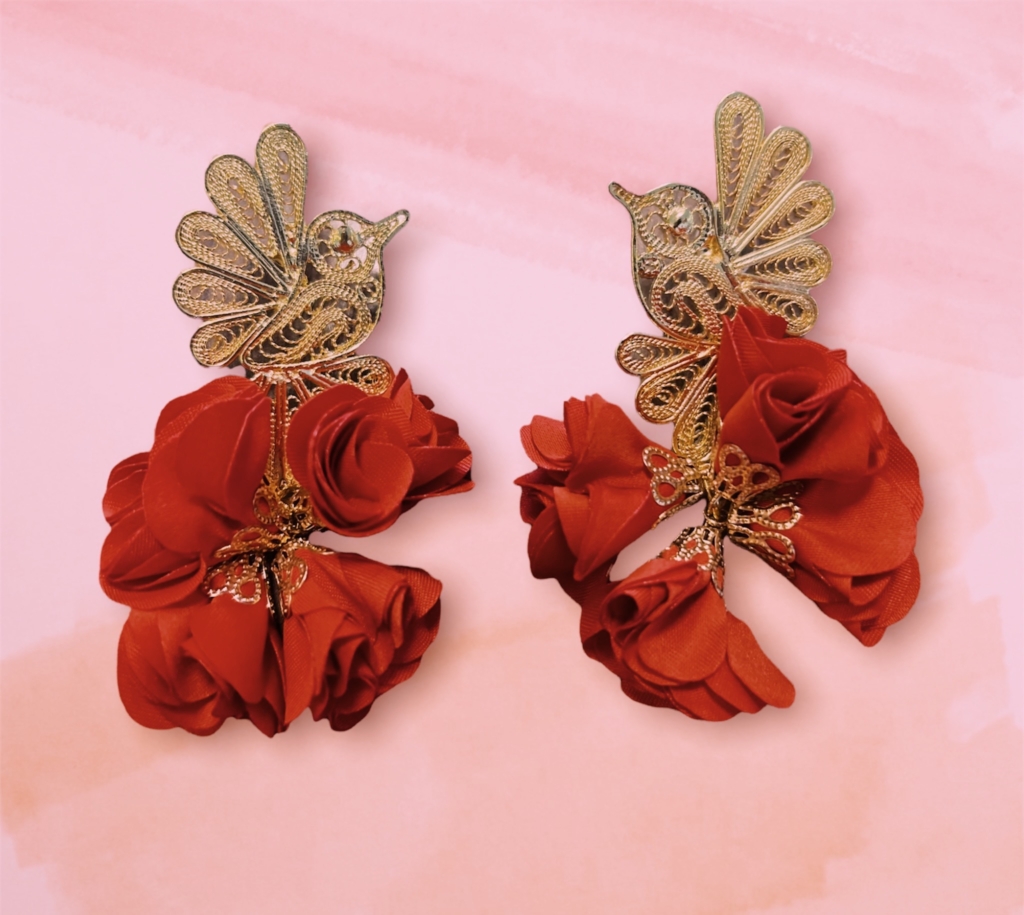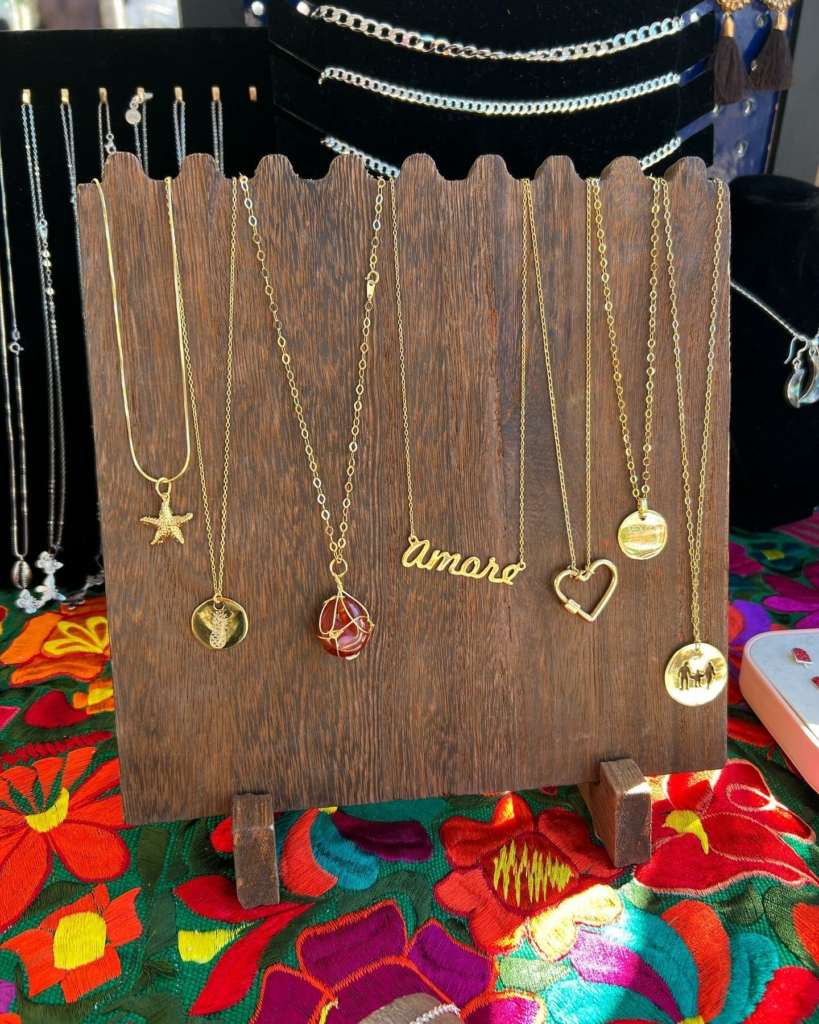
Meet Suleiny Altamirano, owner of Tizana Mexicana inside Pike Place Market.
Tizana Mexicana is a curated collection of jewelry, housewares, and more created by artisans of Mexico. Suleiny sources the goods directly from the Mexican and Indigenous creators, who are often taken advantage of due to language and technology barriers. Tizana Mexicana offers not only a fair price but also business and skills training. This business model helps to preserve tradition and allows its artisans to continue their family legacy of craftwork.
Learn more about Suleiny and her shop in this week’s Small Business Spotlight Q&A!
This interview has been edited for length and clarity.
Where did you grow up and how did you decide to start your own business?
I was born and raised in Mexico, the state of Guerrero, and I studied International Business. At that time I heard a lot of stories such as, “Oh, well, woman in business, that is a challenge,” “Maybe that’s not gonna happen” or “You’re not gonna be able to sit at the table” and those things. And so that made me question myself like, “Okay, I hear a lot on why not, but I want to give myself a chance on why, yes, I can do this job and I can be in this environment as well.” Then I moved to Seattle and studied at the University of Washington, got into a Master’s Degree in Entrepreneurship, and I wanted to learn more and I wanted to grow in a way that I could feel confidence in myself and just doing what I have.
I think it’s very difficult to build that confidence, but we deserve a chance. And maybe we don’t have it all figured out the first time, but at least we are trying and doing something. I think that’s what matters.
What does the name “Tizana” mean?
It comes from “artisan” or “artesana”. We wanted to be coherent with what we were doing, which is sharing the work from the artisans. This is an opportunity for us to pursue our dreams. And also as a woman, to keep trying and just being out there. To dream and also plan, and prepare. And give ourselves a chance to do this, to do what we’re passionate about.
Are all of your artisans women, and can you tell us about an artisan you’re inspired by?
The majority are women, and Jacqueline was the first one. A while ago, I interviewed her and it was interesting to hear her story because when she started with the Talavera, a lot of the people on the team were mostly men. And when I came to her, I wanted to do some different things, and see how we could use the traditional styles, but also add different modern perspectives. So we came up with the idea of Talavera-style jewelry. And in the interview, she was saying how now that was the best-selling product they have.
She got to grow and not only prove herself to the team, but feel more confident about her voice within their family. And that for me, is an amazing impact. Not only just in numbers, but in experiences and what are they feeling and how are they coming to Tizana Mexicana.
We want to preserve the traditions that have been going on for generations.
What was the vision behind Tizana Mexicana?
I wanted to make a space where the artisans could come and feel confident to reach out, to relate to and trust in Tizana and in myself that I was going to do what I said that I was gonna do, which is share their talent, and not steal from them.
There are a lot of situations where they have been taken advantage of. They may not speak English or other languages, and also sometimes they don’t even speak Spanish because a lot of the artisans come from Indigenous communities.
A lot of people also ask why aren’t they in other platforms like Amazon or Etsy? Well, because they also don’t have computers. They work with their cell phones. And that’s why I want to help them to grow as well because this is helping them improve their lives, generating more income for their families.
The average family is about five people with each artisan. And so far we represent about 175 artisans. We work with eight states in Mexico and we are so happy and grateful.
They live by selling a product or selling a cup or selling jewelry. And so they enjoy that. Some of them don’t have any other education, and this practice of making these products is passed through generations. So if one day they don’t sell these products, maybe the tradition is going to be lost, because they need to also feed their families. So we want to preserve the traditions that have been going on for years, generations.
And then we thought about how can we give back. A part of the percentage of the sales goes directly for artisans to get training in adoption of technology, and either soft skills or hard skills, so they can grow as well. What we’re trying to do is to build an ecosystem where we learn from each other. We learn from them about each product, and also we wanted to share the authentic experience. And so sourcing directly from those local artisans is the most important thing for us.
What type of products do you offer and where do they come from?
Each state in Mexico is known for something different, there is a lot of diversity. And there are stories we need to share about where things come from.
For example, a lot of sterling silver comes from Taxco, Guerrero, which is the Aztec mines.
In Puebla, it’s the talavera, a hand-made and hand-painted ceramic, and it takes about 100 processes to do it. And actually it was declared Cultural Heritage of the World in 2019. And it’s just beautiful, all the work. This is an influence that we got actually from Spain, and the traditional color that we got to keep was this blue color, the blue talavera. And actually, that’s what our logo is inspired by.
We have Chiapas with the textiles, we have Oaxaca with embroideries.
At Tizana, we have jewelry, accessories, apparel, home decor, rebozos, loom-woven tote bags. And when we give one of these pieces, we share also the artisan that made this work. We want to highlight them, because they are the ones that do all this work.
The most popular products are the coffee tumblers and Jarrito mugs. These mugs remind me of sharing hot cocoa or a coffee with grandma. It was a tradition doing that, every Sunday, gathering together as a family. That connection and that memory that makes it so powerful.
So you’re also combatting cultural appropriation of these designs by offering them from the source?
Yeah, there’s a lot of appropriation within design and culture. So we are going with the source directly. And I feel like that’s what makes it more authentic as well. We have developed the relationship with these other artisans. And that’s what we want to continue to do. We look for collaborations or other partnerships in order to make this grow. But the artisans, it’s the people that is helping us making these products.
It’s about enriching lives and connecting generations. And just speaking about it and sharing my story.
Where can people find your shop?
We are inside Ventures Marketplace in Pike Place Market. It’s a space that helps BIPOC and small business owners share the talent and the products that we have with different communities, and it has been an amazing opportunity for us. It’s in the lower level of the market, inside stall #521.


